The Gambia is an African country with a unique shape, a fascinating history, and incredible wildlife. It’s become increasingly popular among foreign tourists searching for new experiences or just an opportunity to relax by the beach. If you’re curious about what to see in the Gambia, there’s plenty.
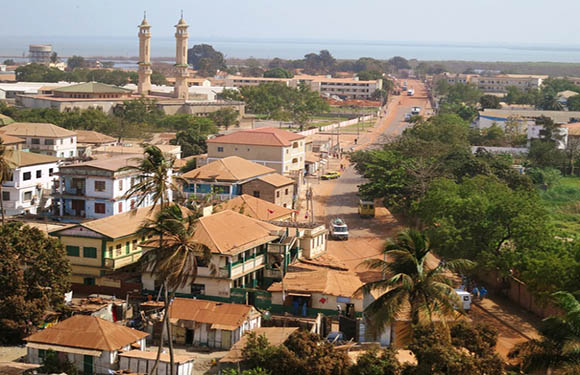
The country is officially known as “The Gambia” to avoid confusion with southern African country Zambia, although it is still often referred to as just “Gambia”.
It is bordered by Senegal on three sides and has a narrow coastline on the Atlantic Ocean. Its unique, curvy shape follows the contours of the Gambia River, which runs through the middle of the country.
20 Things to See and Do in the Gambia:
1. Bakau
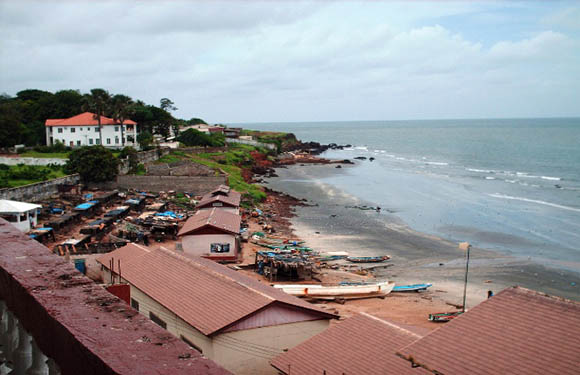
Located a short distance west from the capital city of Banjul lies Bakau. It is situated on the Atlantic coast where the ocean meets the Gambia River and is home to about 48,000 people. There are several interesting attractions that make the city one of the most popular destinations among tourists.
The Bakau Fish Market is something that attracts many visitors throughout the year. Both locals and tourists frequent the market to see and buy fresh seafood brought in from the Atlantic. Fishing boats leave early in the morning and return to the market in the afternoon to sell the day’s catch. For people that aren’t familiar with the local seafood or with fish markets in general, it is possible to have a guide help you navigate the scene.
Another of Gambia’s most popular tourist attractions is the Kachikally Crocodile Pool. It is located in southern Bakau and is home to more than 80 crocodiles. It is traditionally believed that bathing in the waters here can help women conceive children, and the pool is still sometimes used for this purpose, though bathing happens away from the crocodiles.
Other attractions in this Gambian city are the Bakau Craft Market, where many different handicrafts are sold, and the National Botanical Gardens.
2. Banjul
Banjul is the capital city of Gambia. It went by the name of Bathurst while it was under British control, but the name was changed to Banjul as part of Africanization efforts made in 1973.
Located on the coast of the Atlantic Ocean, this city is known as the most developed city in terms of tourism. Part of what makes the capital special are its many historical buildings and its proximity to areas of natural beauty. The main attractions here are Arch 22, the Gambia National Museum, and Albert Market. Since this is also the country’s tourism hub, there are a number of tour agencies that run excursions from the city and base their operations here.
3. Brikama
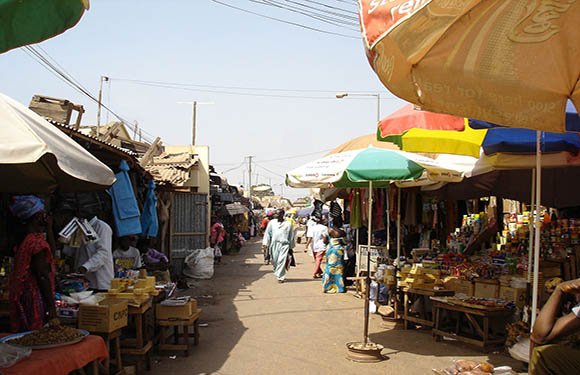
Located in the west of the country, Brikama is one of Gambia’s largest cities. In 2013, the population in the city exceeded 100,000. In addition to its size, this city is reputable for being the center of the Gambian music industry, wood carving, its emerging forest industry, and for its educational institutions. It is one of the most visited cities in Gambia.
There are several famous Gambian musicians that have come from the city of Brikama, including griot Foday Musa Suso and more recent names like Brikama Boyo. There are many clubs that play music in Brikama, and traditional instruments are sold here.
The Brikama Craft Market is the place to go for anyone interested in the wood carving expertise that the city is famous for. In this market, you’ll be able to explore many different stalls of vendors selling carved works of art, instruments, and other goods. The market has some history behind it: it was established in 1957, but it moved to its current location in 2007. Visitors should remember that prices are usually negotiable!
4. Bansang
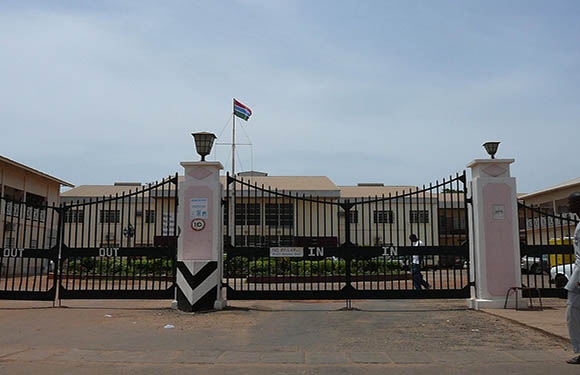
Bansang is located in the Central River region of Gambia, and it’s home to around 9,000 people. The only government hospital in the interior of Gambia is located here, and it hosts an important market for peanuts, rice, and fish.
Travelers looking to experience a side of Gambia that isn’t offered in resorts may be attracted to this town. It has a relaxed atmosphere and is relatively small but interesting to explore. It’s location on the Gambian River offers great natural views and plenty of birdlife.
5. Janjanbureh
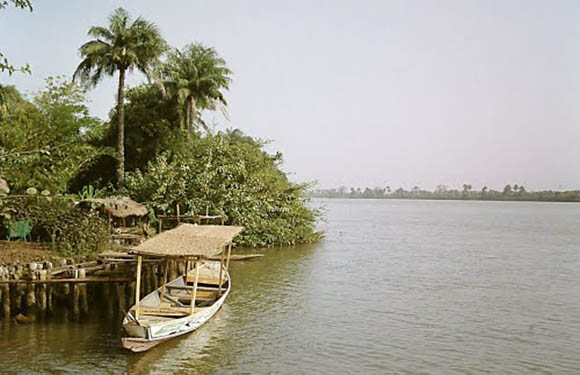
Janjanbureh is a town on an island in the Gambia River in east Gambia. It was founded in 1832 and was known as Georgetown until its name was changed in 1995. The island is now referred to as Janjanbureh Island, previously MacCarthy Island. It was once the largest town in the country.
There isn’t a great deal of tourism infrastructure in and around Janjanbureh, but that can make it appealing to those looking for more of an authentic experience. One point of interest in the city is its history as a colonial administrative hub. It’s also popular among birdwatchers, as there is an incredible number of species that live nearby. The town is also known for containing Gambia’s main prison.
6. Kunta Kinteh Island
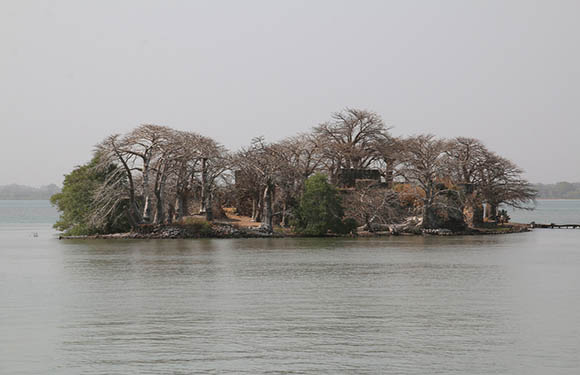
This is a site that is loaded with historical significance. The island is located in the middle of the Gambia River, near the Atlantic Ocean. It is one of the most frequently visited places in the country and has been listed as a UNESCO World Heritage Site since 2003.
The history of the island goes back centuries and was an important site of interaction between European and African peoples from the 15th century onward. Given its location on the river, the island served as a gateway to Africa’s interior for European traders arriving by Atlantic waters. Possibly the most infamous piece of this island’s history is that it played a central role in slave trade between Europe, the Americas, and Africa. For years, control of the island passed between the Portuguese, English, Dutch, and French.
Kunta Kinteh Island went by the name of James Island until 2011, when American artist Chaz Guest appealed to Gambian President Yahya Jammeh to give the island an African name. The name Kuna Kinteh comes from a book by author Alex Haley describing a character of the same name that was taken from Gambia to America as a slave.
7. Abuko Nature Reserve
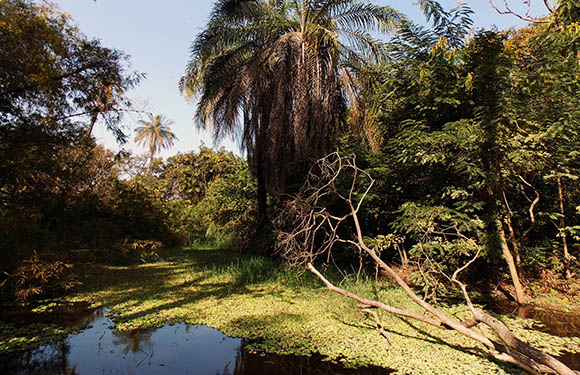
The Abuko Nature Reserve was the first wildlife park to be established in The Gambia, gaining official status as such in 1968. The reserve is located in the western part of the country, near the capital city. What makes this nature reserve such a special place to visit is the impressive flora and fauna that call it home. The Lamin Stream runs through the park and helps to support a diverse collection of life on the 107 hectares of land.
Among the many animal species found in the reserve are mammals like antelopes, squirrels, hedgehogs, and monkeys; reptiles like snakes, crocodiles, and lizards; and hundreds of different species of birds. There are also colorful butterflies and moths that can be found flying around the area. A shelter for animals in need is located at one end of the park, and a pack of hyenas currently lives here.
With roughly 33,000 visitors each year, the Abuko Nature Reserve is Gambia’s most-visited tourist attraction. It is also the closest tropical forest to Europe.
8. Kiang West National Park
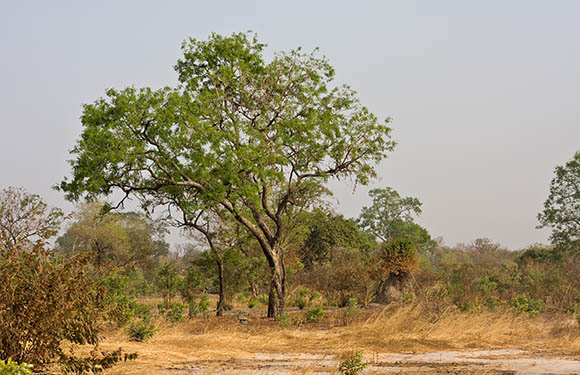
Although it isn’t visited by nearly as many tourists as the Abuko National Park, this national park is one of the largest and most important wildlife reserves in the country. It covers an area of more than 11,000 hectares and supports the largest and most diverse wildlife population of any park in Gambia. The park is located 145 km inland from the country’s capital and is on the south bank of the Gambia River. It was opened in 1987.
There are many different species that are able to live in the park due to its diverse topography and plantlife. In addition to several different reptiles — crocodiles, lizards, and snakes — there are over 290 different bird species that live in the park. This can make it an exceptionally rewarding visit for birdwatchers. You’ll also find different cat species like the serval and leopard as well as manatees, dolphins, and hyenas.
9. Brufut Beach
This is a favorite Gambian beach for many people because of its beauty and isolation. To actually make your way to the beach, it’s necessary to navigate down some beachside cliffs. There are paths that lead the way, but they do get quite steep in some sections. This makes the beach less crowded than others in the area and can provide a more relaxed atmosphere. In addition to other beachgoers looking for a less crowded slice of beach, you’ll find local women and fisherman repairing nets and fishing.
Brufut is also a resort and village. There are many hotels that have been constructed in the area in recent times, and this makes it much easier to stay in or near the village. Tourists from the UK are some of the most frequent visitors to the area.
10. Senegambian Stone Circles
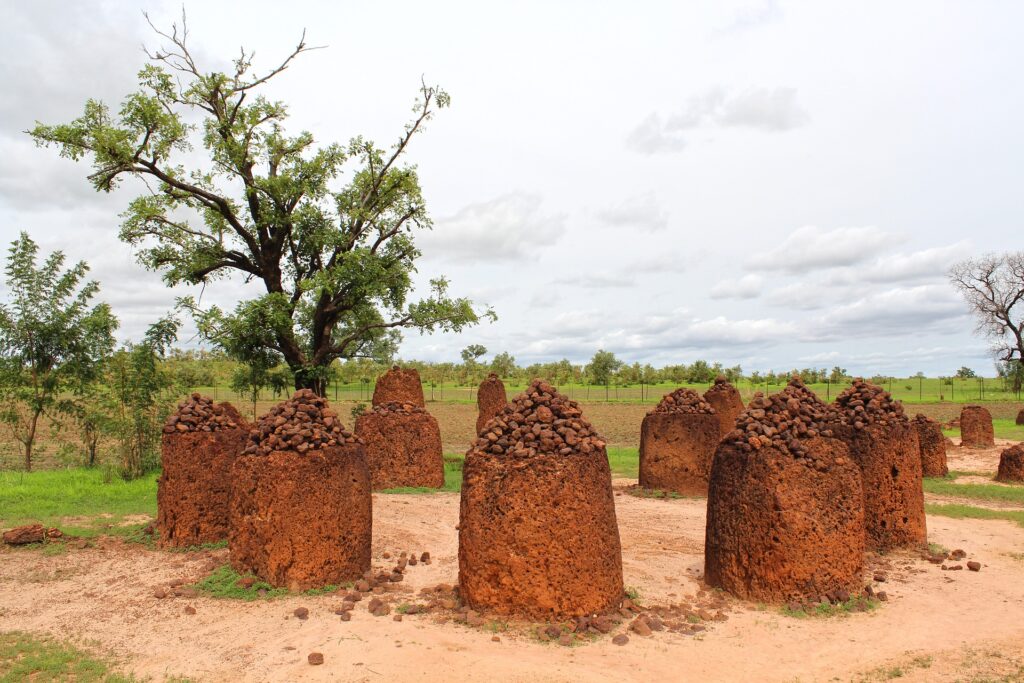
The Senegambian Stone Circles (also called Wassau Stone Circles in Gambia) are certainly unique to the region. They are circles of megalithic stones that can be found in present day Gambia and Senegal. The exact origin of the stones — who built the circles and when — is still unknown. Estimates for the time the circles were built range from the third century BCE to the sixteenth century CE. The builders of these circles could have been ancestors of the Wolof, Jola, or Serer people.
The sheer scope of the stone circles is impressive: they represent the largest concentration of stone circles anywhere on the planet, with a total area of approximately 30,000 square kilometers. There are over 1,000 stone circles and burial mounds spread over this area. The landscape is considered sacred and has been in use for more than 1,500 years, which is part of the reason it’s been listed as a UNESCO World Heritage Site since 2006.
11. Jinack Island
This island is also sometimes called “Paradise Island” or “Treasure Island.” It is a picturesque and peaceful strip of coastline just north of the Gambia River on the Atlantic coast and is close to the border with Senegal.
Popular activities for visitors to this island include birdwatching, boat cruises, nature treks, fishing, and tours by donkey cart. There are also a number of restaurants and bars on the beach that are great for relaxing and enjoying the food and scenery.
12. Sanyang Beach and Town
Located in the southwestern coastal area of Gambia is the town of Sanyang. It’s just over 30 km outside of Banjul and is home to 7,000 people. The town’s inhabitants are mostly Mandinka, Wolof, Fula, and Joja peoples, and farming and fishing are the main economic activities. While the town may seem sleepy and uninteresting to some tourists, the nearby Sanyang Beach has been far more popular for many years.
Sanyang Beach is actually composed of three beaches: Pelican, Osprey, and Paradise Beaches. It’s considered by many to be Gambia’s best beach and is known for its smooth sand bordered by palm trees. Paradise Beach can become crowded during the tourist high season, but there are still areas of the beach that remain calm for those willing to walk a little further.
There’s also a renowned fish market in Samyang Fishing Village for those interested in high quality, fresh seafood.
13. Makasutu Culture Forest
Makasutu Culture Forest is a private woodland reserve in western Gambia that is used for ecotourism, and it has a lot of history. The name Makasutu comes from the Mandinka words “maka” and “sutu,” translating to “holy forest” in English. The use of this name can be traced back as far as the 12th century, which is around the time Islam was spreading into the region from the Sahara.
In the past, there was a great deal of Mandinka folklore surrounding the forest. The Ninki Nanka is a dragon-like creature that is believed to inhabit different swamps and forests around West Africa, and some believe that it lives in the Makasutu Forest. Local legend maintains that the creature protects the forest and that there are also spirits and giants that call the woods home. Hunting and cutting down trees was prohibited for many years because of these beliefs, until migrants from Guinea began cultivating land in the forest in the 20th century.
In recent history, the forest saw almost complete destruction due to unchecked tree felling and was almost completely treeless by 1992. The fortune of the forest changed when two British investors purchased land to create an eco hotel and to rehabilitate part of the forest. The eco hotel named “Mandina River & Jungle Lodges” has received international awards and is highly rated.
14. Serrekunda
Originally nine separate villages that have grown together to create one large urban center, Serrekunda is the largest city in The Gambia. The name of the city means “family of Seyer” in Wolof and refers to the city’s founder, Sayerr Jobe. There are roughly 340,000 people that live in Serrekunda, and it is 13 km from the capital, Banjul.
This might not be the most obvious stop for tourists, and it might not appeal to some because of its size and lack of tourism infrastructure, but those interested in experiencing a vital part of Gambia will find what they’re looking for. In addition to the city’s large market, there is a renowned Batik Factory, regular wrestling matches at the Senegambia West Mini Stadium, and nightclubs. Petty theft is something to watch out for in crowded areas here, and tourists should watch valuable items closely.
15. Tanji Village
Also referred to as Tanji Fishing Village, this is one of the busiest fishing locations in The Gambia. Because it is so busy, the beach that is directly in front of the village isn’t very suitable for anyone that isn’t actively working. There are boats, fish, people, nets, and buckets all moving at high speed. There is a beach located further to the north and across a bridge that is far calmer and could be a better fit for people looking to simply enjoy the beach.
In Tanji Village itself, there is a village museum that holds artifacts like traditional instruments and antique furniture. There is also a handicrafts market in the museum, and dance or music performances are sometimes held here.
Wildlife lovers may also enjoy a visit to the area around Tanji Village, especially birdwatchers. The Tanji Bird Reserve is located just three kilometers outside of the village and is home to more than 300 different species of bird.
16. Chimpanzee Rehabilitation Project Camp
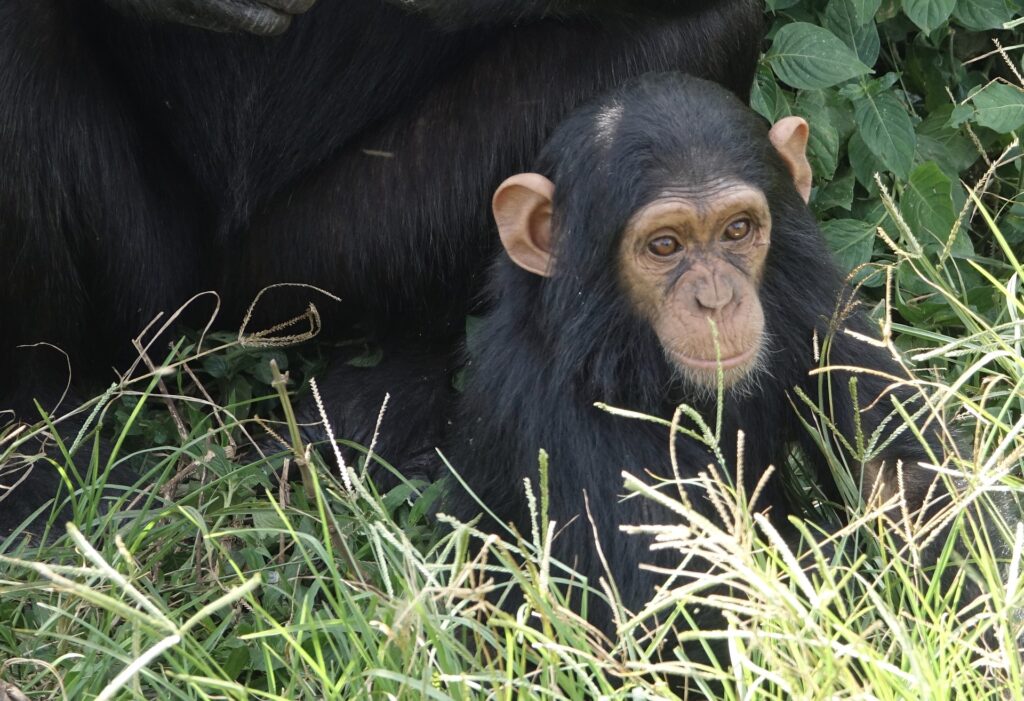
This could be the perfect opportunity for wildlife lovers that are interested in a unique experience. The Chimp Rehabilitation Project Camp was moved to its current location in 1979 and is now home to more than 100 chimps. The project began informally ten years prior, with orphaned chimps being reintroduced to the wild at Abuko National Park. The chimps now live on the Baboon Islands in the River Gambia National Park. It is Africa’s longest running chimp rehabilitation endeavor and could be one of the most interesting places to see in Gambia.
Visitors to the park are sure to have an interesting experience: accommodation is in tents on elevated platforms, and there is no grid electricity on the property. Meals are provided, and you’ll have the chance to take trips on the river and through the area to see the chimpanzees living freely in the wild.
17. Gunjur Beach and Village
This is an area of Gambia that will appeal to visitors looking to get off the beaten path. It isn’t as busy or developed as the more resort-heavy coastline to the north, and it has plenty of natural beauty. Gunjur Fishing Village is a bustling hub of fishing activity, but there are much calmer, almost deserted stretches of beach as well.
The village itself is relaxed and not very busy; there is a Gunjur Village Museum that features a variety of artifacts and aims to preserve local culture and history. Other activities that people enjoy here are birdwatching, fishing, nature treks, and surfing.
18. The Gambia River
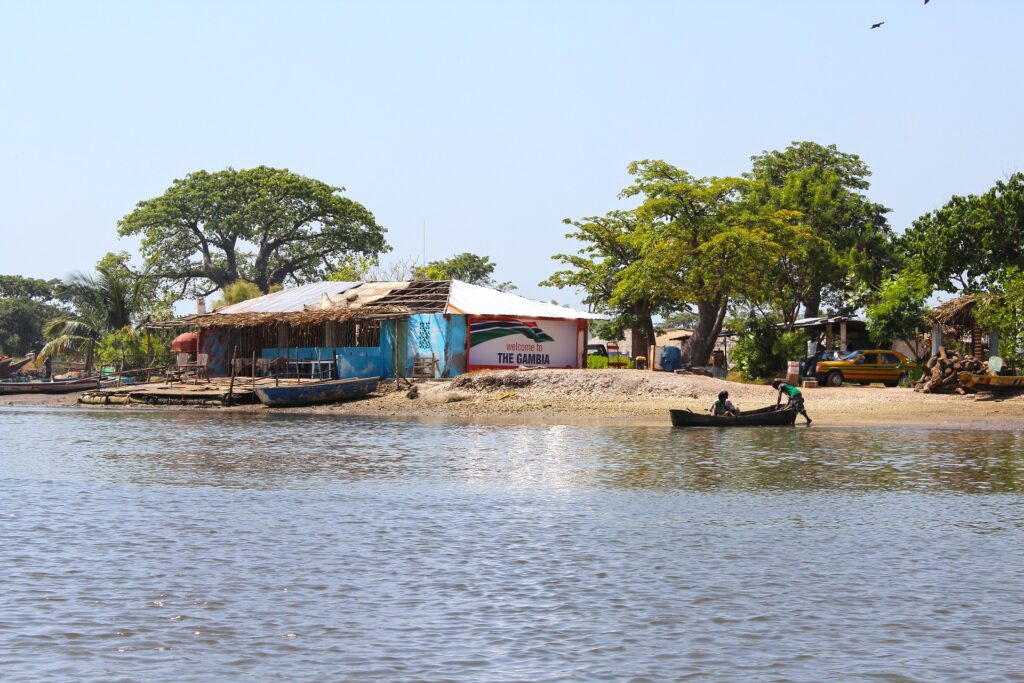
The Gambia River is perhaps one of the most essential elements of Gambia and its identity. The country is bisected by the river for its entire length, and life is centered around the river for people, plants, and animals alike. Visitors to Gambia have a variety of options when it comes to experiencing this central component of Gambia, the most common being river cruises.
You’ll want to avoid swimming in the river because there are crocodiles and hippos that call the water home, but enjoying the river from a boat can be an exciting experience. There are many different day trips of all types and prices on the river: you can take a short afternoon ferry, or you can spend all day on a boat with food and beverages provided. Local guides will be able to help you spot and identify wildlife.
19. Golf
Golfing may not be the first activity that comes to mind when thinking of things to do in Gambia, but there are many golfers that enjoy Gambia’s warm, dry weather on the course. The country’s oldest golf course, Fajara Golf Club, is located very close to the beach and was founded in 1937. The course here is challenging and boasts a beautiful landscape and a variety of interesting local bird species. There are several different golf clubs available for visitors all within a short distance from Gambia’s Kotu Beach.
20. Museum of Slavery
Visiting the Museum of Slavery is one of the more somber things you could to in Gambia, but there is some very important, if dark, history being preserved here. The museum contains various objects that are related to the slave trade that happened in this area up until the 19th century. Some depictions of the treatment that slaves received is quite gruesome. There’s also a replica construction of a slave ship and memorabilia linked to the Alex Haley book “Roots,” and the related film.
Tourism in Gambia
The tourism sector in Gambia began with the arrival of 300 Swedish tourists in 1965, the year Gambia gained independence. The number of visitors increased rapidly to 25,000 visitors by 1976.
The number of tourists has continued to grow sharply over the years, and tourism is becoming an important part of the country’s economy. The main tourist attractions in Gambia are the beaches, national parks, markets, and its interesting history and culture.
Gambia Tourism FAQs
Is it safe to visit Gambia?
Gambia is a relatively safe country to visit. The biggest danger to most visitors is petty street crime, which can usually be avoided by staying aware of your surroundings and not walking alone at night. Mosquitos in the country do carry yellow fever, which can have serious symptoms, but vaccines are highly effective and widely available. It is not advisable to drink tap water in Gambia.
How many tourists came to Gambia in 2021?
It’s estimated that roughly 100,000 tourists visited Gambia in 2021. Numbers have dropped significantly since the onset of COVID-19 but are steadily rising again. There were 620,000 tourists in 2019.
What is the currency of Gambia?
The official currency of the Republic of Gambia is the Gambian dalasi (GMD).
When is the best time to visit Gambia?
The best time to visit Gambia is during the dry season, from October to June. It’s easier to travel around the country during these months and there are less mosquitos. Most foreign tourists arrive between October and April.
What is Gambia most known for?
Gambia is most known for its wildlife and national parks. There are plenty of options for a safari in Gambia. In particular, Gambia is famous for being a birdwatcher’s paradise. There are over 500 species of birds that can be seen in the country.